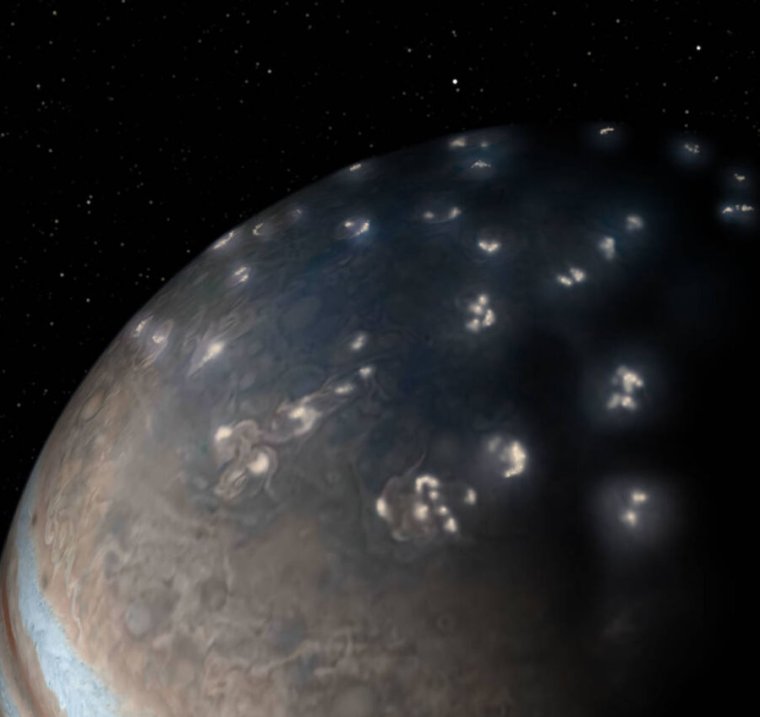Enlarge / Lightning crackles behind the dawn edge of Jupiter’s atmosphere. (credit: NASA/JPL-Caltech/SwRI/JunoCam)
There are waves on Jupiter, but not exactly the kind surfers can ride. These plasma waves are much more intense than anything that crashes onto a beach.
NASA’s Juno spacecraft keeps coming across humongous plasma waves as it orbits Jupiter. These waves are actually known as Kelvin-Helmholtz instabilities (KHIs), and they occur when plasma from the solar wind interacts with the magnetopause of a planet, the outer level of its magnetic field. The difference in velocity between the magnetopause and solar wind creates a furiously swirling wave—a vortex.
“The Kelvin-Helmholtz instability may be observed at the boundary that separates a planetary magnetic field (magnetosphere) from the stream of charged particles emitted by the Sun (solar wind); this boundary is known as the magnetopause.” the researchers said in a study recently published in Geophysical Research Letters.
Read 11 remaining paragraphs | Comments

